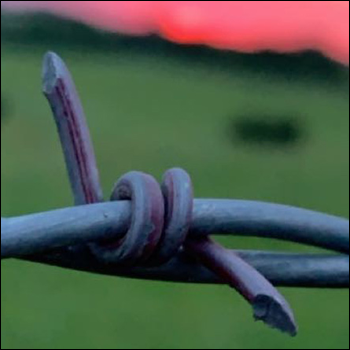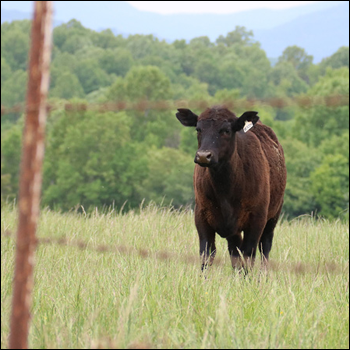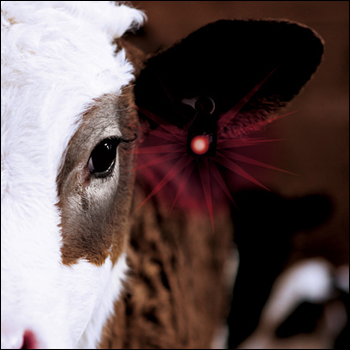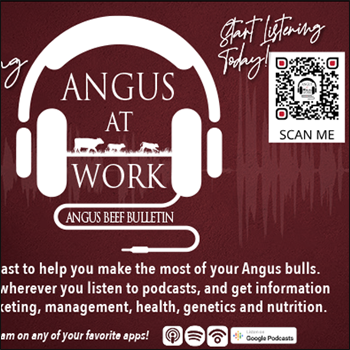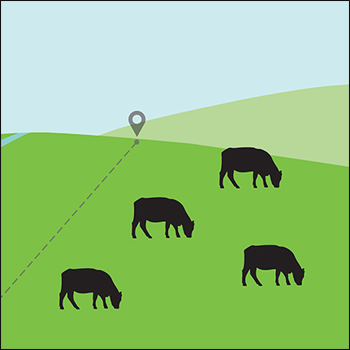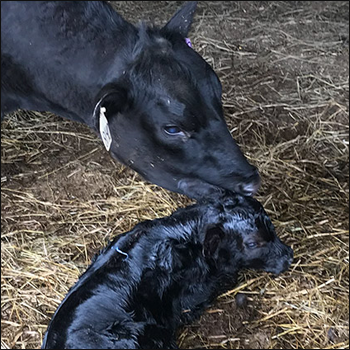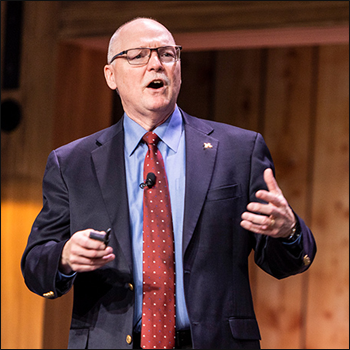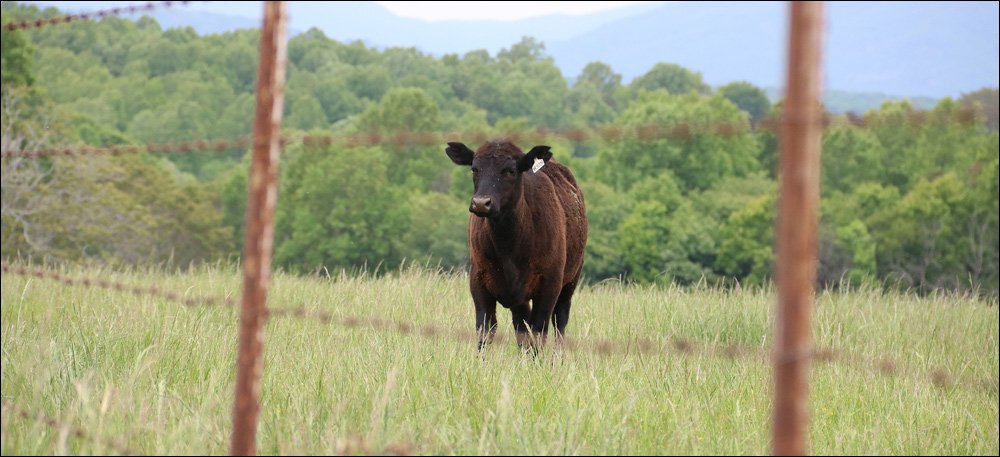
Handy Homemade Wire Unroller
Wire unroller developed for fencing in steep sagebrush-covered mountainsides.

Good fences need to last a long time, so many farms and ranches have barbed-wire fences for big pastures and rangeland. When building barbed-wire fence, it helps to have an easy way to unroll wire. Many methods are used — such as putting the roll on a stationary bar at a brace or corner and pulling the wire along the fenceline. People often put a bar or pole across the end of a pickup, attach the end of the wire to the fence post, and drive along to unroll the wire.
A simpler method was devised by Idaho rancher Lynn Thomas, now 78 years old, a few years ago when he needed to build several miles of fence with limited help and waning strength. Necessity was the mother of his invention.
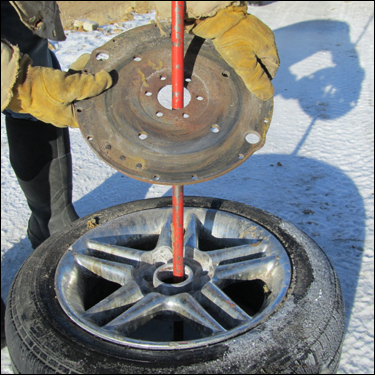
|
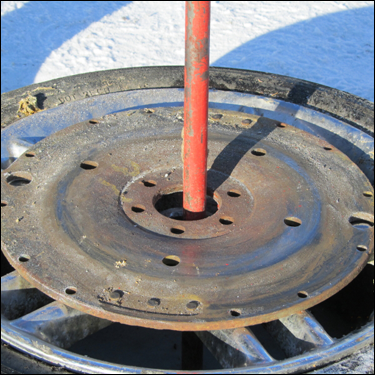
|
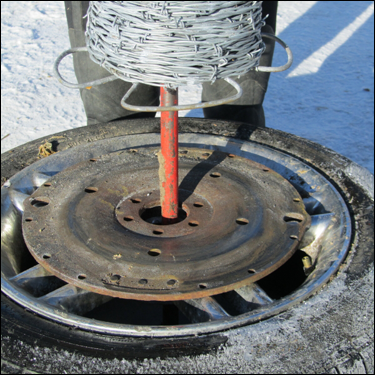
|
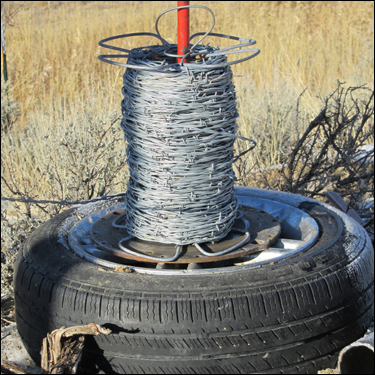
|
He looked at a homemade unroller a neighbor gave him — a device attached to the rear bumper of a pickup. It was a U-shaped piece of metal a little bigger than a roll of barbed wire, with a metal rod in the middle to hold the roll. The idea behind this creation was to park the pickup and pull the wire from it, or drive the pickup along the fenceline to unroll the wire with the end of the wire affixed to a post.
The problem with this method was that Thomas’s ranch terrain — steep sagebrush-covered mountainsides — made this impossible. Wire unrolled in this manner also catches on sagebrush, creating a jerk, and then the spool unrolls too fast with entanglements.
Thomas created his own version by using a round, flat metal plate.
“A person can make a plate from a piece of ⅜-inch metal, cutting it in a round circle about the diameter of a roll of barbed wire, putting a hole in the center that a bar will fit through,” he says.
Thomas put a tire rim around the outside of the metal plate; the roll of barbed wire sits on the flat metal plate with the tire rim around it.
He warns, “Make sure the rim does not stick up beyond the plate. It must be flush so the wire won’t catch on the rim.”
The rim he used was from a 13-inch tire off a small car.
It works best to leave the tire on the rim to give it more stability, he explains.
“One reason this works so well is that friction between the metal plate and the unrolling wire creates a little drag that acts like a brake. The wire won’t go spinning off it, out of control,” he adds.
He used this method to unroll wire for miles of five-strand barbed-wire fence — more than 20 rolls of wire. He suggests placing the unroller at the spot you want to start, making sure that spot is flat — even if you have to put rocks under the lower edge. Every stretch of fence should be unrolled on flat ground or heading downhill. It doesn’t work to pull the wire uphill, he says.
The roll of wire is set on the flat plate, with a metal bar or small rod put down through it into the ground. You can pound the rod into the ground a few inches to hold it in place. This device stays in place even when pulling long runs — even the whole roll (1/4 mile) if you make sure the final end of the wire doesn’t come off the spool. Even in uneven, brushy terrain, two people can readily pull the wire with one person starting down the hill with the end of the wire, and the second person taking hold about 75 or 100 feet behind the front person to give some added pull.
“With this device, unrolling this much wire, I never had any problems. We’ve never had anything that worked as well as this — and we’ve built more than 25 miles of fence over the past 55 years on this ranch,” says Thomas.
Editor’s note: Heather Smith Thomas is a cattlewoman and freelance writer from Salmon, Idaho. Lead photo is by Aubrey Herbers from the NJAA/Angus Journal photo contest.

Angus Proud
In this Angus Proud series, Editorial Intern Jessica Wesson provides insights into how producers across the country use Angus genetics in their respective environments.
 Angus Proud: Scott Sproul
Angus Proud: Scott Sproul
Oklahoma operation learned wisdom of moving calving season to better suit their marketing needs.
 Angus Proud: Bubba Crosby
Angus Proud: Bubba Crosby
Fall-calving Georgia herd uses quality and co-ops to market calves.
 Angus Proud: Jim Moore
Angus Proud: Jim Moore
Arkansas operation retains ownership through feeding and values carcass data.
 Angus Proud: Les Shaw
Angus Proud: Les Shaw
South Dakota operation manages winter with preparation and bull selection.
 Angus Proud: Jeremy Stevens
Angus Proud: Jeremy Stevens
Nebraska operation is self-sufficient for feedstuffs despite sandy soil.

